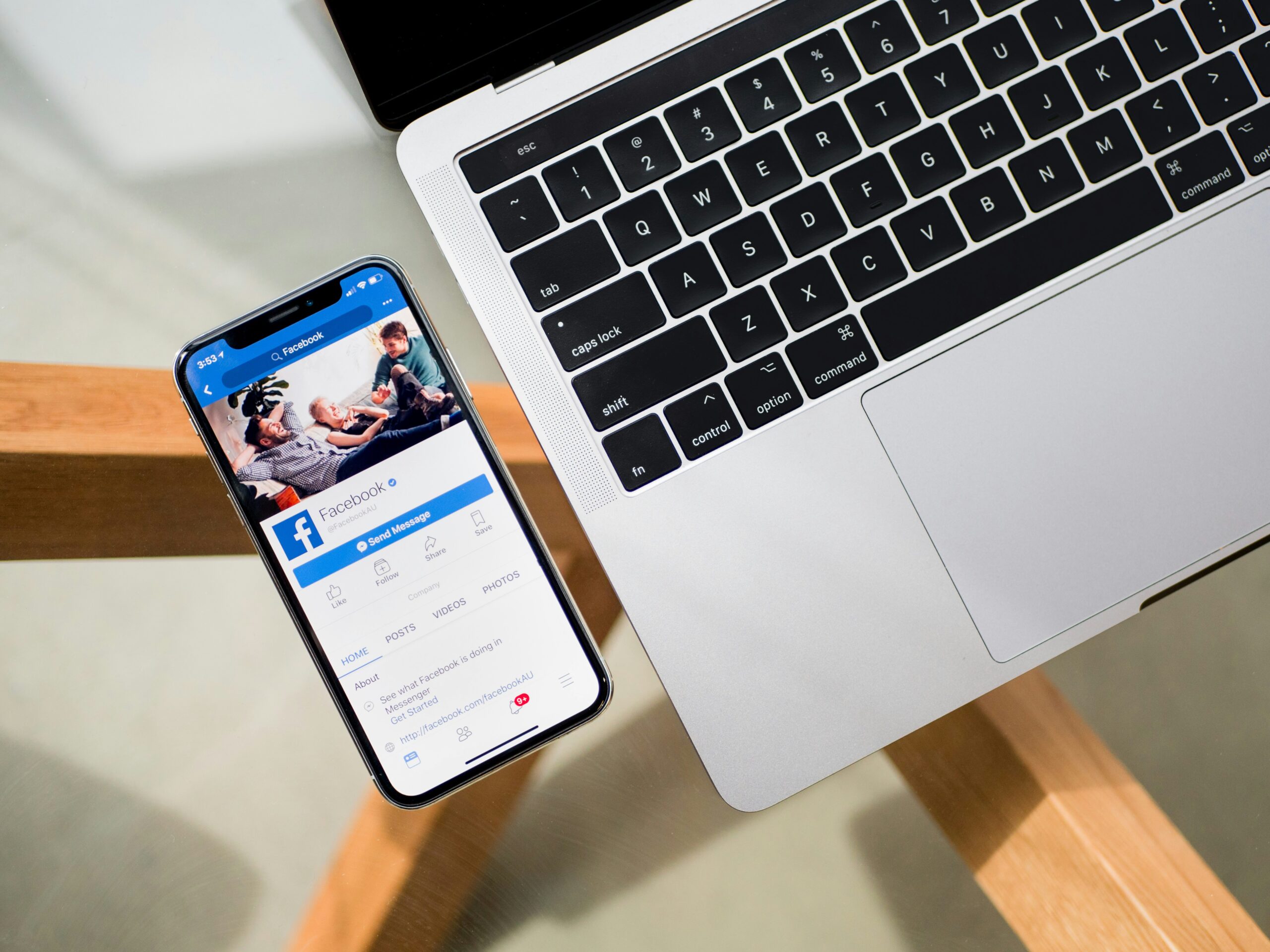
Social media has become an indispensable marketing tool. With billions of users actively engaging on various platforms, it offers a powerful avenue to reach your target audience and achieve your marketing goals. However, simply having a presence on social media isn’t enough. Paid social media advertising is a strategic investment to stand out and connect with your ideal customers.
This comprehensive guide delves into the key components of building successful paid social media advertising campaigns.
From understanding your audience and choosing the right platform to crafting compelling ad copy and optimising for results, we’ll equip you with the knowledge and strategies you need. Learn to navigate the ever-evolving world of social media advertising like a pro.
Getting Started (The Beginner)
Paid social media advertising is essentially buying space to promote your business or content on social media platforms. Unlike regular social media posts, which rely on organic reach (the number of people who see your posts without any promotion), paid ads get shown to a specific audience you define through targeting options.
Here’s a breakdown of what paid social media advertising is about:
- Increased visibility: Paid ads allow you to bypass the algorithm and reach a wider audience on social media. This is especially useful when you’re just starting out or your organic reach is low.
- Targeted reach: Social media platforms offer powerful targeting features that let you zero in on your ideal customers. You can target users based on demographics, interests, behaviours, and even purchase history.
- Campaign objectives: You can design your paid social media campaigns to achieve various goals, such as generating brand awareness, driving traffic to your website, or increasing leads and sales.
- Measurable results: The beauty of paid social ads is that you can track their performance closely. You’ll see metrics like impressions (views), clicks, and conversions, allowing you to optimise your campaigns for better results.
- Remarketing: Paid social media allows you to retarget users who have already interacted with your brand in some way. This could be people who visited your website, downloaded a white paper, or abandoned their shopping cart. By showing them targeted ads, you can remind them of your brand and encourage them to take action.
In fact, 61% of users have purchased products based on an advertisement they saw on social media, making paid ads a crucial element for any brand looking to boost sales and conversions.
Paid Social Media Vs. Organic Social Media
| Paid Social Media | Organic Social Media | |
| Cost | Requires budget allocation | Free to post |
| Reach | Broader audience reach | Reach is limited to followers and their connections |
| Targeting | Highly targeted to specific demographics and interests | Limited targeting options |
| Speed | Results can be seen quickly | Slower growth, takes time to build an audience |
| Content Focus | Can be promotional or informational | Focuses on building brand awareness and engagement |
| Measurement | Detailed performance metrics available (impressions, clicks, conversions) | Limited data on reach and engagement |
| Best for | Growing brand awareness, driving traffic, generating leads and sales | Building relationships, fostering brand loyalty, increasing brand credibility |
What Do You Want Your Paid Social Media Ads to Achieve?
Before diving into the world of paid social media advertising, it’s crucial to set clear goals and objectives. These will be your roadmap to success, guiding your campaign development, targeting, and measurement. Here’s a breakdown to help you define what you want to achieve with your ads:
1. Identify Your Overall Marketing Goals:
- Where does paid social media fit into your larger marketing strategy? Are you looking to build brand awareness, generate leads, drive sales, or something else entirely? Understanding your overarching marketing goals will help you set specific objectives for your paid social campaigns.

2. Choose Your Paid Social Media Objectives:
Social media platforms offer a variety of campaign objectives you can choose from. Here are some of the most common:
- Brand awareness: Increase brand recognition and reach a wider audience. This is a good option for new businesses or those launching a new product or service.
- Website traffic: Drive more visitors to your website or landing page. This can be used to promote new content, special offers, or simply generate interest in your brand.
- Lead generation: Capture leads by encouraging users to sign up for your email list, download a white paper, or register for a webinar.
- Conversions/Sales: Drive direct sales or other desired actions on your website, such as online purchases, app downloads, or event registrations.
- Engagement: Increase interaction with your brand through likes, comments, shares, and mentions. This can help build brand loyalty and community.
3. Make Your Objectives SMART:
Once you’ve chosen your objectives, ensure they are SMART:
- Specific: Clearly define what you want to achieve. Don’t just say ‘Increase brand awareness’. Instead, say ‘increase brand awareness by 20% among our target demographic within the next quarter’.
- Measurable: How will you track your progress? Identify the key metrics you’ll use to measure success, such as impressions, reach, clicks, conversions, or engagement rate.
- Attainable: Be ambitious, but also realistic. Set goals that are achievable within your budget and timeframe.
- Relevant: Your objectives should align with your overall marketing goals and target audience.
- Time-Bound: Set a specific timeframe for achieving your objectives. This will help you stay focused and motivated.
How To Choose The Right Platform
When it comes to paid social media advertising, selecting the right platform is crucial. Each platform has its own unique strengths and user base, making it essential to choose the one that best aligns with your goals and target audience.
Here’s a quick rundown of some of the major social media platforms and their strengths for different advertising objectives:
-
Facebook
The granddaddy of social media, Facebook boasts a massive and diverse user base, offering incredible reach potential. It excels at:
- Brand awareness: Reach a broad audience and build brand recognition.
- Website traffic: Drive targeted traffic to your website or landing page.
- Lead generation: Capture leads through engaging content and effective lead capture forms. If you’re having an event you can even use specific event registration forms so you know beforehand just how many people will attend – and to have a copy of their information on hand.
- Conversions/Sales: Promote products and services directly and drive online sales.
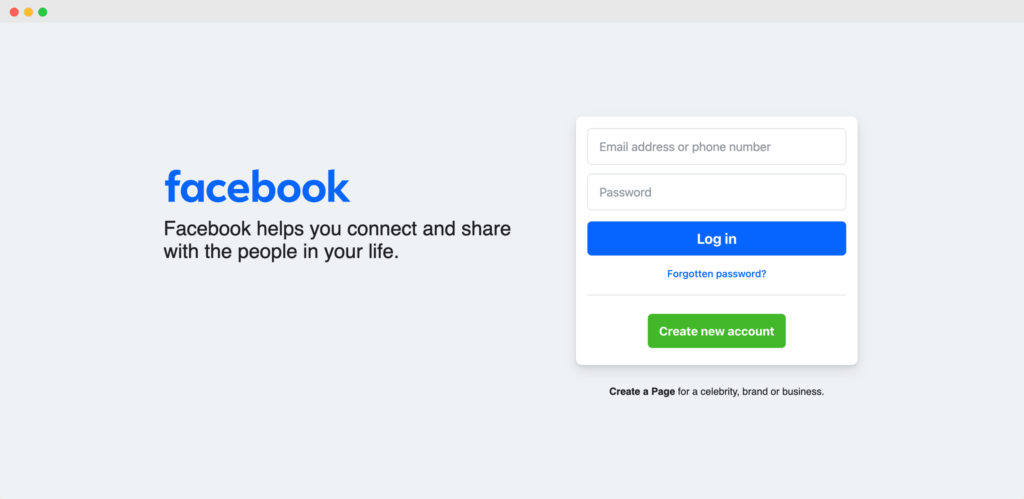
Known for its focus on visuals, Instagram is a great platform for brands that have a strong visual identity or are targeting a younger demographic. It shines in:
- Brand awareness: Build brand awareness through visually captivating content.
- Engagement: Spark conversations and increase brand interaction through interactive features like polls and stories.
- Influencer marketing: Partner with relevant Instagram influencers to reach a wider audience and build trust.
- Product marketing: Showcase products and drive sales through shoppable posts and stories.
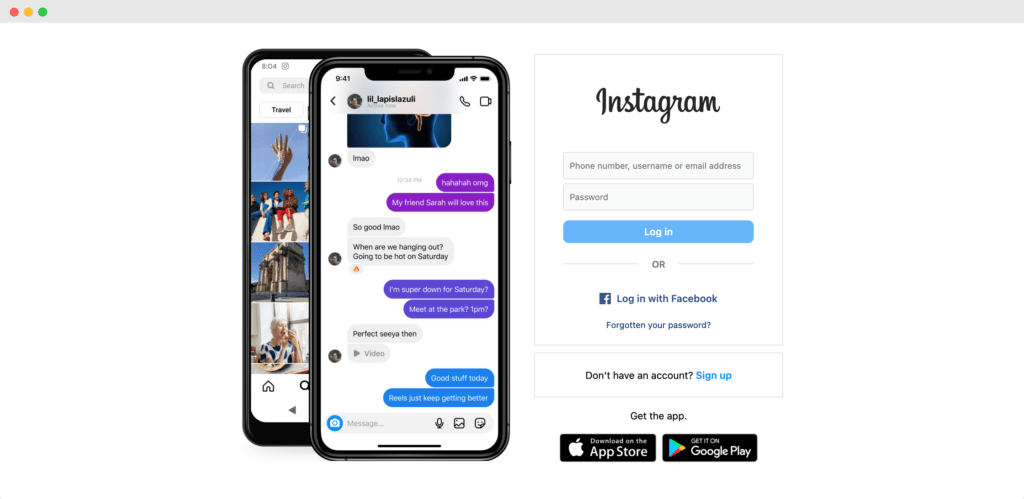
-
TikTok
The king of short-form video content, TikTok has exploded in popularity, especially among younger audiences. It’s ideal for:
- Brand awareness: Go viral with creative and engaging short-form videos.
- Engagement: Encourage user-generated content and build a loyal community around your brand.
- Reaching Gen Z: Target a younger demographic that spends a significant amount of time on the platform.
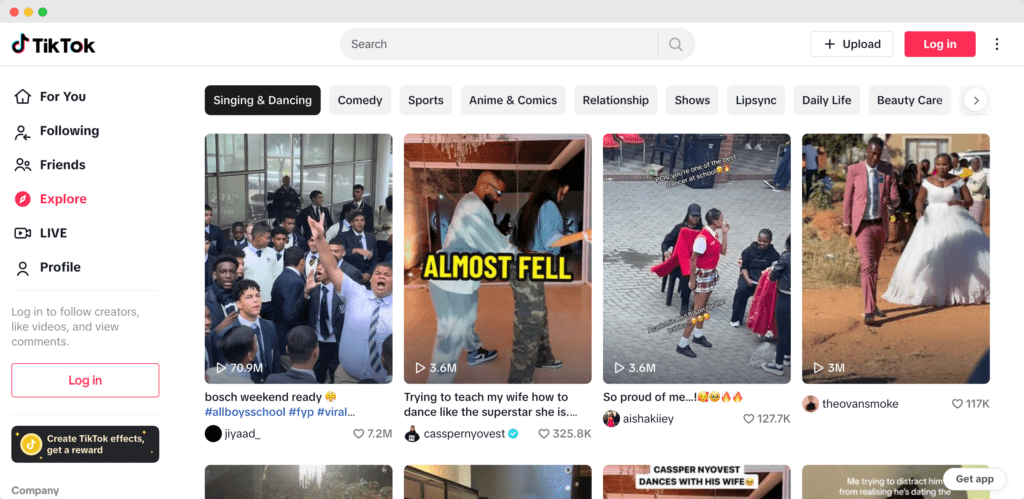
The professional networking platform, LinkedIn, is a great choice for B2B businesses and those targeting a more professional audience. It’s perfect for:
- Brand awareness: Build brand awareness and thought leadership within your industry.
- Lead generation: Generate high-quality leads from professionals actively seeking solutions.
- Content marketing: Share industry insights and establish yourself as a thought leader.
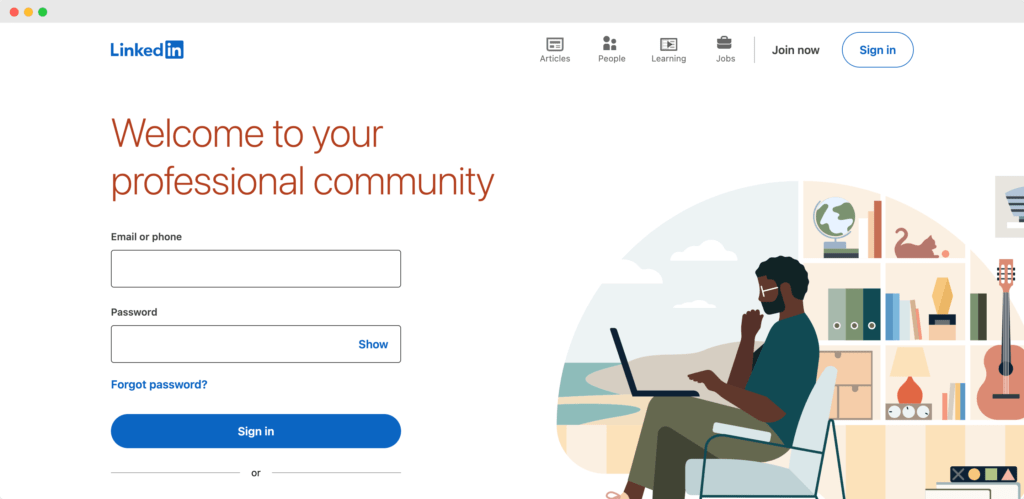
The platform for real-time conversations and breaking news, X allows you to connect with your audience more directly. It’s a good fit for:
- Brand awareness: Drive brand awareness through real-time engagement and trending topics.
- Customer service: Provide real-time customer support and address customer concerns publicly.
- Public relations: Promote company news and announcements and build relationships with journalists and influencers.
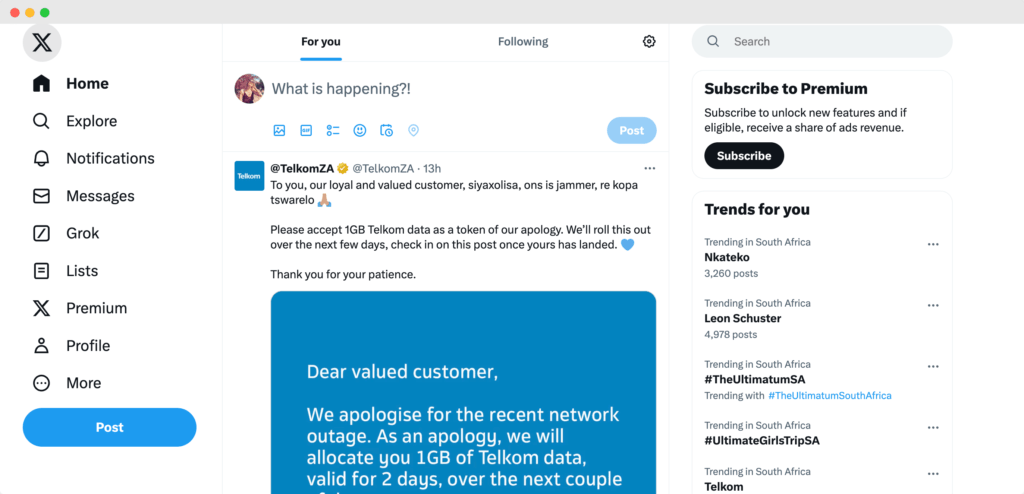
YouTube offers a robust ad platform that allows you to target a massive audience with laser precision. It can be a very effective tool depending on your goals. It can help with:
- Brand storytelling: You can showcase your products, services, and brand personality more engagingly and memorably compared to static ads.
- Measurable results: You can see impressions, clicks, views, conversions, and audience engagement, allowing you to optimise your campaigns for better results.
- Brand awareness: By creating informative or entertaining video ads, you can capture viewers’ attention and position your brand in a positive light.
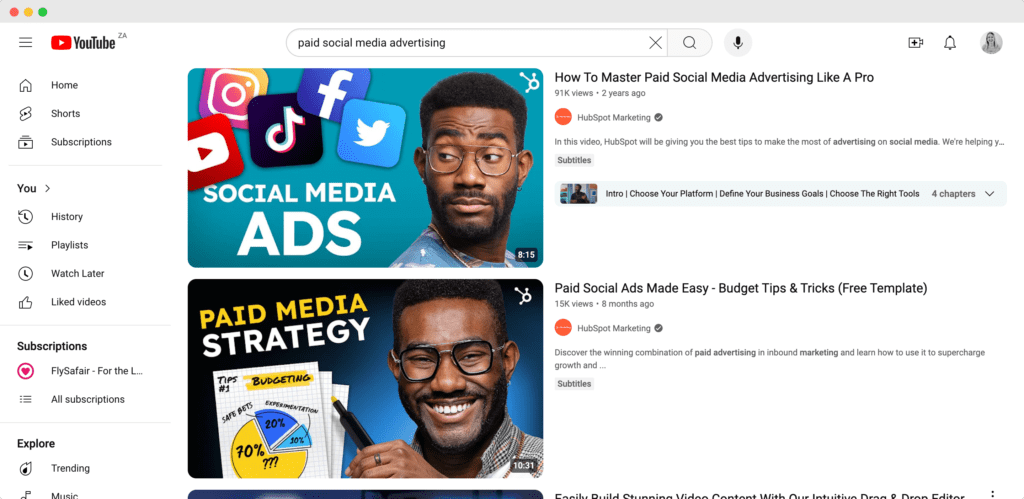
Building Your Campaign (The Intermediate)
Targeting the right people with your paid social media ads is crucial for success. To achieve this, you need to understand your ideal customer – their characteristics, needs, pain points, and online behaviour. This is where buyer personas come in.
What Is A Buyer Persona?
A buyer persona is a semi-fictional representation of your ideal customer. It’s a detailed profile that captures their demographics, behaviours, motivations, and challenges. By creating buyer personas, you gain a deeper understanding of who you’re trying to reach with your ads, allowing you to craft targeted messaging that resonates with them.
How to create buyer personas for paid social media ads:
- Gather existing customer data:
- Analyse your website analytics, social media data, and CRM systems like Instantly AI and Livespace to understand your current customer base. Or, you can use native features on social media platforms, like TikTok data export, to gather insights effortlessly. Look at demographics, interests, and online behaviour.
- Conduct market research:
- Supplement your data with market research to gain insights into your target audience. This could involve surveys, interviews, or focus groups, all which can be more more efficient when using a market research tool.
- Identify commonalities:
- Analyse your data and research findings to identify patterns and common characteristics. Look for similarities in demographics, interests, challenges, and online behaviour.
- Develop buyer personas:
- Based on your findings, create detailed profiles of your ideal customers. Include:
- Demographics: Age, gender, location, income, etc.
- Behaviours: Online behaviour, social media usage, content consumption habits.
- Needs & Goals: What are they trying to achieve?
- Pain Points & Challenges: What problems are they facing?
- Values & Preferences: What motivates them? What kind of content resonates?
- Based on your findings, create detailed profiles of your ideal customers. Include:
- Give your personas a name and story:
-
- Assigning a name and a backstory to your persona helps you visualise them as real people. This makes it easier to understand their perspective and tailor your messaging accordingly.
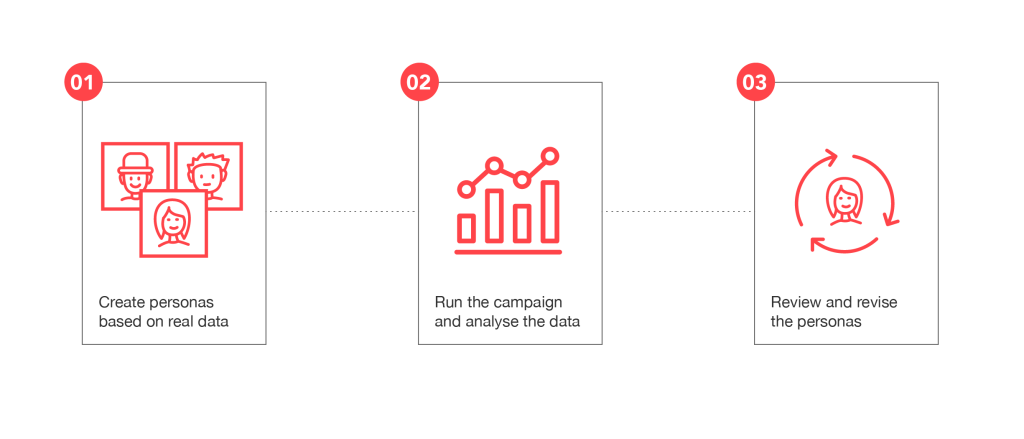
Once you have your buyer personas, leverage them to inform your paid social media ad targeting decisions. Here’s how:
- Identify relevant platforms: Based on your persona’s social media habits, choose the platforms where they’re most likely to be active.
- Target demographics: Use the demographic information in your personas to target your ads to specific age groups, locations, and income levels.
- Target interests & behaviours: Leverage the platforms’ targeting options to reach users based on their interests, behaviours, and online activity (websites visited, content engaged with).
- Craft compelling ad copy: Use the insights from your personas to develop ad copy that speaks directly to their needs, challenges, and desires.
9 Tips For Writing Clear, Engaging Ad Copy
- Know your audience: This goes back to buyer personas. Understand their needs, wants, and pain points. Craft your message to directly address them.
- Focus on benefits, not features: People care more about how your product or service will improve their lives. Highlight the benefits they’ll experience, not just the technical features.
- Use strong verbs and action language: Energise your copy with active voice and strong verbs. Encourage clicks and engagement with clear calls to action.
- Keep it clear and concise: People are busy scrolling. Get your message across quickly and easily. Avoid jargon and complex sentences.
- Be conversational: Write in a friendly, approachable tone. Talk to your audience, not at them.
- Highlight urgency or scarcity: Create a sense of urgency to encourage immediate action. This could be a limited-time offer, limited quantities, or exclusive access.
- Use emotional triggers: Evoke emotions like happiness, excitement, or curiosity to grab attention and make your ad memorable.
- Proofread carefully: Typos and grammatical errors scream unprofessionalism. Double-check your spelling and grammar before publishing your ad.
- Test different variations: A/B test different headlines, visuals, and calls to action to see what resonates best with your audience.
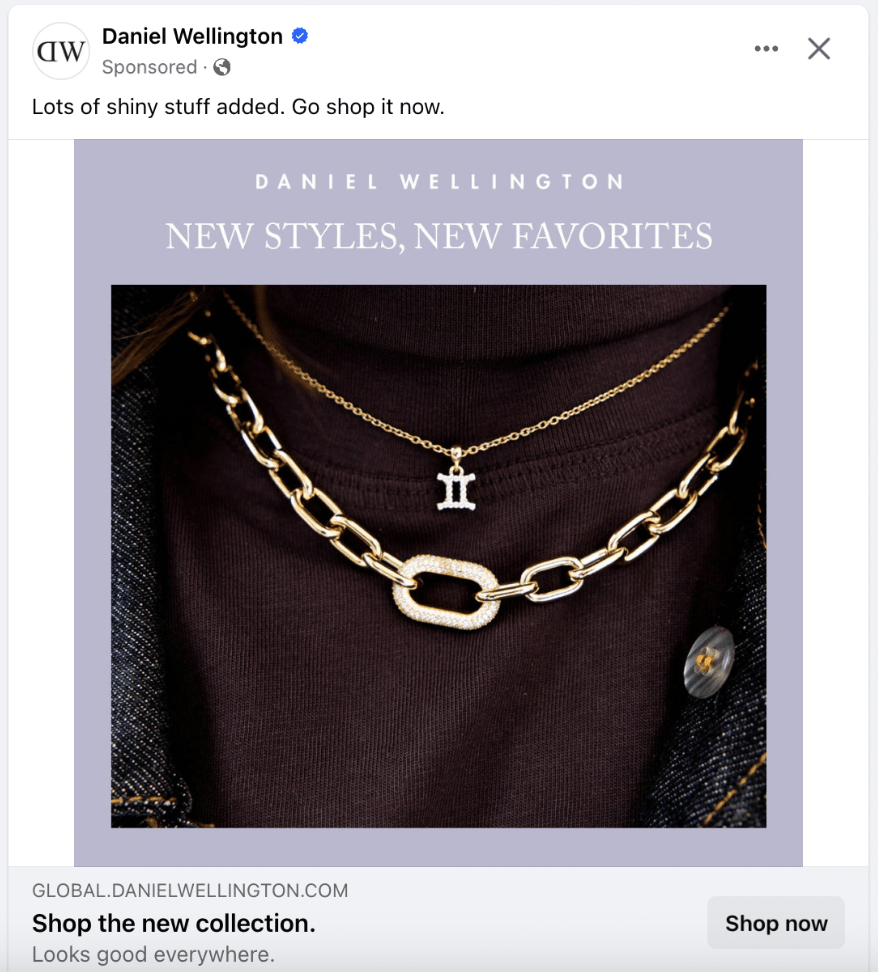
The Power Of High-Quality Visuals In Paid Social Media Ads
In the fast-paced world of social media, where attention spans are fleeting, high-quality visuals are the key to grabbing attention and stopping the scroll. They can make or break your paid social media ad campaign. Here’s why visuals are so important:
- Attention-grabbing: Eye-catching visuals are like magnets, drawing users in and interrupting their newsfeeds.
- Emotional connection: Humans are visual creatures, and visuals can evoke emotions and create a lasting impression much faster than text alone.
- Enhanced brand storytelling: Images and videos can tell a powerful story about your brand, showcasing your products, services, and values in a creative and engaging way.
- Improved brand credibility: High-quality visuals convey professionalism and polish, making your brand appear more trustworthy and reliable.
- Increased engagement: Ads with visuals tend to generate more clicks, shares, and comments compared to text-only ads.
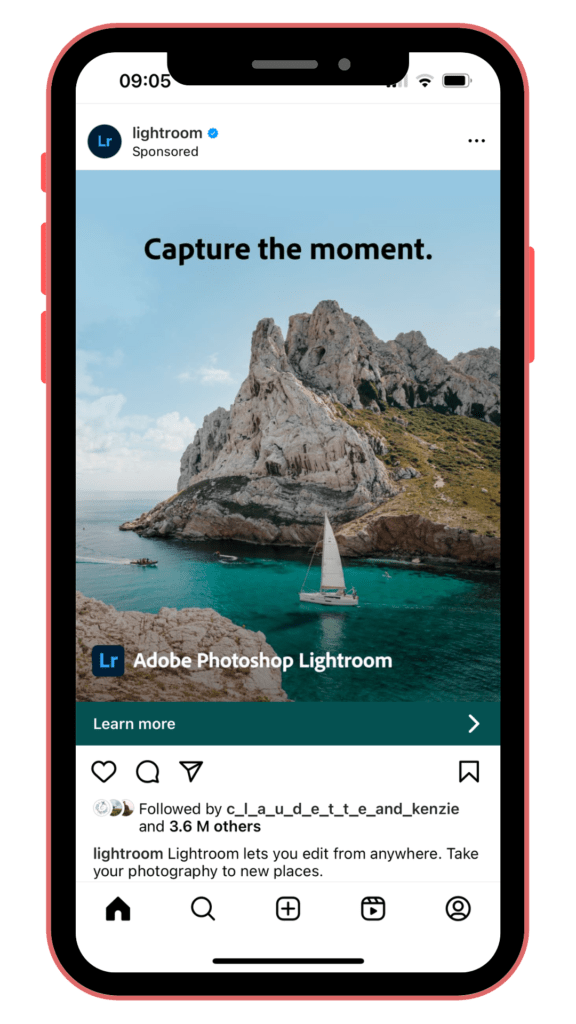
Choosing the Right Visual Format for Each Platform
Since each social media platform caters to different content consumption habits, it’s crucial to choose the right visual format for your ads:
- Facebook:
- Images: Still images are a versatile option, ideal for showcasing products, infographics, or lifestyle content.
- Videos: Short-form videos (under 2 minutes) work well, especially for explainer videos, product demonstrations, or behind-the-scenes glimpses.
- Instagram:
- Images: High-quality photos are king on Instagram. Use visually appealing product shots, user-generated content, or lifestyle imagery.
- Reels: Short-form video storytelling that grabs attention and boosts engagement on Instagram.
- Stories: Utilise Instagram Stories (short, disappearing videos and photos) for real-time updates, behind-the-scenes peeks, or interactive polls.
- LinkedIn:
- Images: Professional-looking images are a good choice, such as infographics, charts, or images related to your industry.
- Videos: Educational or thought leadership videos can establish your expertise and credibility.
- YouTube:
- Videos: Long or short, YouTube is one of the best platforms for video content.
- TikTok:
- Short-form Videos: This platform thrives on short, engaging videos that are creative, fun, and use trending sounds or challenges.
Taking Control (The Boss)
Social media advertising platforms offer a wealth of targeting options that go far beyond basic demographics. By leveraging these advanced features, you can create highly targeted campaigns that reach the exact audience most likely to be interested in your product or service.
Here’s a breakdown of some of the most common targeting options available:
- Demographics:
- Basics: Age, gender, location (country, region, city, zip code), education level, income level, relationship status, and family composition.
- Advanced: Generation (Millennials, Gen Z, etc.), ethnicity, job title, homeownership status, and language spoken.
- Interests:
- Basics: Hobbies, favourite brands, interests related to work or entertainment.
- Advanced: Purchase history, browsing behaviour, life events (marriage, graduation), and interests related to specific products or services.
- Behaviours:
- Basics: Device usage (desktop, mobile), purchase behaviour (online shoppers), and travel behaviour (recent travellers).
- Advanced: Website visitor behaviour (users who visited specific pages on your website), app usage, and intent-based targeting (users actively researching a similar product or service).
- Lookalike audiences:
- This powerful feature allows you to create a new audience based on the characteristics of your existing customers or website visitors. This helps you reach new people who share similar traits with your high-value audience segment.
- Custom audiences:
- Upload your own customer data (email lists, phone numbers) to create custom audiences for targeted ad campaigns. This is a great way to re-engage past customers or target website visitors who haven’t converted yet.
- Engagement targeting:
- Target users based on their past interactions with your brand on social media. This could include people who liked your page, watched a video ad, or engaged with a previous campaign.
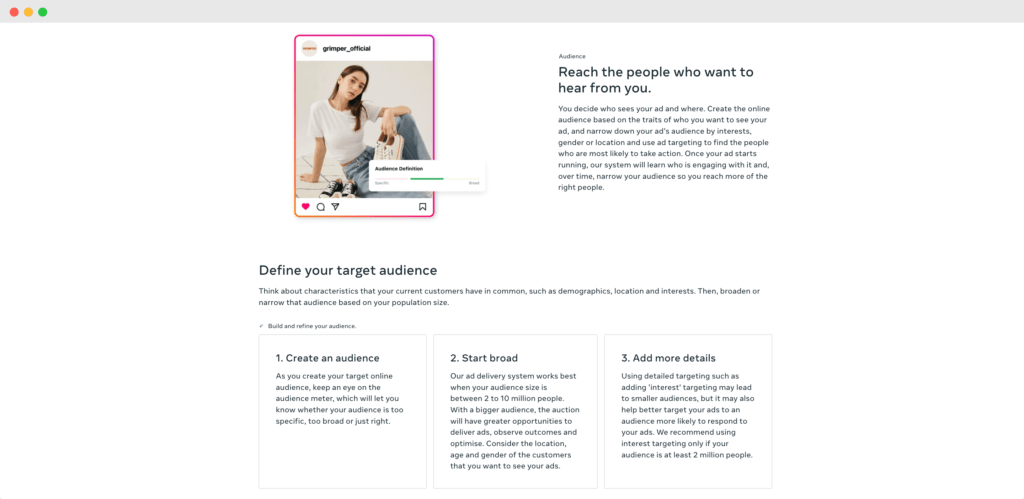
Additional targeting options:
- Keywords: Target users who have searched for specific keywords related to your product or service.
- Events: Reach users who are interested in or attending a particular event.
- Connections: Target friends of your existing followers or customers to expand your reach.
Remember: The specific targeting options available may vary slightly depending on the social media platform you’re using.
4 Main Bidding Strategies For Social Media Ads
When running social media ad campaigns, you don’t directly pay for the ad itself. Instead, you bid against other advertisers to determine how much you’ll pay each time someone interacts with your ad in a specific way.
Here’s a breakdown of the most common bidding options and how to choose the right one for your goals:
- Cost-per-Click (CPC) or pay-per-click (PPC)
- What it is: You pay each time someone clicks on your ad. This is a good option when your goal is to drive traffic to your website or landing page, generate leads, or increase conversions (sales, downloads, etc.).
- Pros:
- Ensures you only pay when someone shows interest by clicking on your ad.
- Good for driving targeted website traffic and conversions.
- Cons:
- May not be ideal for brand awareness campaigns where clicks are not the primary goal.
- Can be more expensive depending on the competition and industry.
- Cost-per-Thousand Impressions (CPM)
- What it is: You pay each time your ad is shown one thousand times, regardless of whether anyone clicks on it. This is a good option for raising brand awareness, reaching a broad audience, or generating interest in a new product or service.
- Pros:
- Effective for increasing brand visibility and reach.
- Often a more cost-effective way to reach a large audience.
- Cons:
- Doesn’t guarantee clicks or engagement with your ad.
- You might pay to show your ad to people who aren’t necessarily interested.
- Cost-per-View (CPV)
- What it is: You pay each time someone views your video ad for a certain amount of time (usually at least 30 seconds). This is a good option for video campaigns where you want to ensure people are actually watching your video content.
- Pros:
- Ensures you only pay when people engage with your video ad.
- Good for promoting video content and brand storytelling.
- Cons:
- Can be more expensive than other bidding options, especially for longer videos.
- May not be suitable for all video ad objectives (e.g., driving website traffic).
- Cost-per-Acquisition (CPA)
- What it is: You pay each time a user takes a desired action, such as a sale, signup, or download, after interacting with your ad. This signifies a successful conversion for your marketing goals.
- Pros:
- You only pay when someone completes a valuable action, ensuring your budget is spent efficiently on acquiring customers.
- CPA allows you to directly track the effectiveness of your campaigns in generating new customers.
- By analysing CPA, you can identify cost-effective channels and optimise campaigns for better returns.
- Cons:
- Setting up CPA campaigns might require more effort than CPC, as conversion tracking needs to be in place.
- Targeting conversions can initially lead to less overall traffic compared to CPC campaigns focused on clicks.
- The effectiveness of CPA campaigns hinges on the attractiveness of your offer to drive conversions.

Monitoring & Optimising Your Campaigns
Running successful social media ad campaigns is an ongoing process. Once your ads are launched, the real work begins – monitoring their performance, analysing the data, and then optimising your campaigns to achieve even better results.
Each social media platform offers a robust analytics suite that provides valuable insights into your ad campaign’s performance. Familiarise yourself with these tools and leverage them to track key metrics. Some crucial metrics to monitor include:
- Impressions: The number of times your ad was displayed.
- Clicks: The number of times users clicked on your ad.
- Reach: The number of unique users who saw your ad.
- Engagement: Likes, comments, shares, and other interactions with your ad.
- Conversions: The number of times users took a desired action after seeing your ad (e.g., website visits, lead form submissions, purchases).
Don’t just collect data – analyse it! Look for patterns and trends to understand what’s working well and what areas need improvement. Based on your analysis, make adjustments to optimise your campaigns for improved performance. Here are some ways to do this:
- Refine your targeting: Exclude irrelevant demographics or interests that aren’t converting.
- A/B test different ad variations: Test different headlines, images, videos, and calls to action to see what resonates best.
- Optimise your landing page: Ensure your landing page is user-friendly and aligns with your ad message to encourage conversions.
- Adjust your budget and bidding strategy: Allocate more budget to high-performing ad sets and consider adjusting your bidding strategy for better results.
- Exclude audiences that aren’t converting: If certain demographics or interests consistently show low conversion rates, exclude them from your targeting.
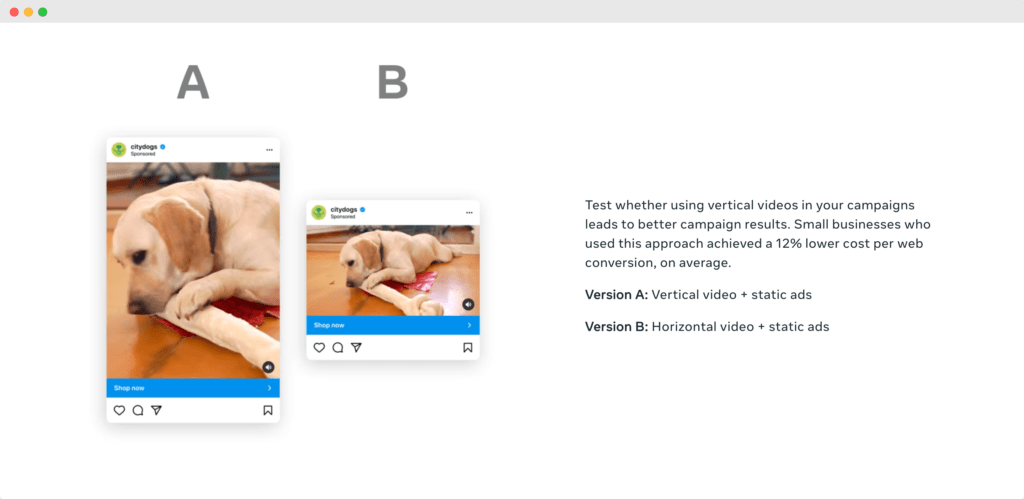
Conclusion
The world of paid social media advertising can seem complex at first glance. But by following the steps outlined in this guide and embracing a data-driven approach, you can unlock its potential.
Remember, the key to success lies in understanding your audience, crafting targeted messages that resonate, and continuously optimising your campaigns based on performance.
So, take what you’ve learned here, tailor it to your specific brand and goals, and get ready to create impactful social media ad campaigns that deliver real results.
Looking for help with your paid social media advertising? Contact us today!



